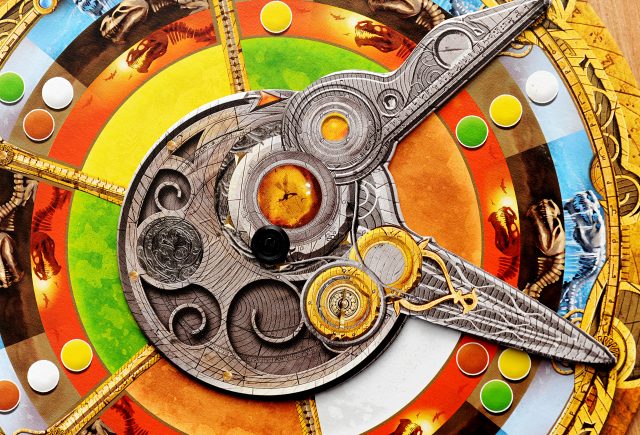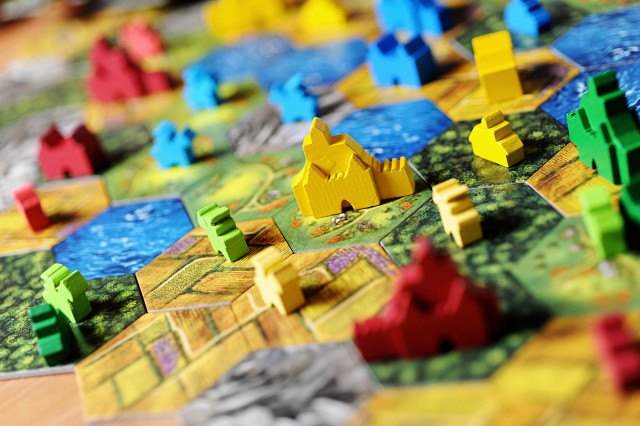There are designers out there that are well known for a specific title. When you hear their name, you immediately picture that game. But, designers rarely only do one game, and they rarely become popular with their very first design. Sometimes a very good game will be overshadowed by one that is more commercially viable or successful, and sometimes games just don’t make the impact that they could. There are so many titles being published every year, it can be hard to keep up with them all. I decided to take a look at a few famous designers, and look at some of their great games that don’t get enough recognition.

It’s hard not to think of Ticket to Ride, when you think of Alan R. Moon. The famous and accessible route-building game has introduced millions of people to the hobby. However, Moon is actually quite a prolific designer with tons of great titles under his belt. While I could’ve picked any of a number of games here, I wanted to mention the beautiful Clippers. Think of it as TTR set in the high seas. Players become the heads of countries in the second half of the 19th century trying to plan the naval routes of different shipping companies. The goal is to direct them to as many islands as possible with their own ports. On a turn, they will either establish a new port on a different island, take an Option card, which gives them a special advantage (and sometimes a penalty), or simply pass. The main strategy of the game comes in the route laying. No player controls the different shipping companies, and so anyone can extend any of the lines. Just like TTR, only one company can be on a route line, but many of the connections between islands have multiple routes. When all the route segments have been played, or all the routes have been dead ended the game is over and players earn points for the islands they have ports on and any leftover money they have. Clippers is a really pretty game with the map showing the South Pacific islands. The route building will feel familiar to fans of TTR, but there a bit more strategy to the game. It would be an excellent next step for fans of Moon’s more famous series.
 Philippe Keyaerts is easily best known for the Small World series. It’s one of the games that probably falls just short of being mentioned with Catan, Carcassonne, and Ticket to Ride, as a classic go-to gateway game. Different mythical races get paired with special abilities and do battle over a map that’s just a bit too small. The different combinations make for a highly replayable experience. Evo by Keyaerts has a similar feel to Small World. There is a mythical island that is too small for the inhabitants, and they will inevitably fight over territory. In Evo, you play dinosaur wranglers trying to spread your population of giant lizards around the board. The problem is this island’s climate is incredibly volatile, going from desert heat to frozen tundra in mere moments. You have to genetically modify your dinos to make them more adaptable to the weather, better at fighting, more mobile, or even more fertile, so they populate faster. Each round starts with revealing a token that will determine the safe and dangerous zones climate-wise for the dinos, then players will bid on various mutations that will improve their creatures. Just like Small World, the points you get for having your dinosaurs on the board each round, also double as your currency. You have to decide how many points you’re willing to pay for that really sweet mutation. Evo is fun to play, thematic, and beautiful, and I highly recommend it to everyone, whether you’re a fan of Small World or not!
Philippe Keyaerts is easily best known for the Small World series. It’s one of the games that probably falls just short of being mentioned with Catan, Carcassonne, and Ticket to Ride, as a classic go-to gateway game. Different mythical races get paired with special abilities and do battle over a map that’s just a bit too small. The different combinations make for a highly replayable experience. Evo by Keyaerts has a similar feel to Small World. There is a mythical island that is too small for the inhabitants, and they will inevitably fight over territory. In Evo, you play dinosaur wranglers trying to spread your population of giant lizards around the board. The problem is this island’s climate is incredibly volatile, going from desert heat to frozen tundra in mere moments. You have to genetically modify your dinos to make them more adaptable to the weather, better at fighting, more mobile, or even more fertile, so they populate faster. Each round starts with revealing a token that will determine the safe and dangerous zones climate-wise for the dinos, then players will bid on various mutations that will improve their creatures. Just like Small World, the points you get for having your dinosaurs on the board each round, also double as your currency. You have to decide how many points you’re willing to pay for that really sweet mutation. Evo is fun to play, thematic, and beautiful, and I highly recommend it to everyone, whether you’re a fan of Small World or not!
 Marc André gets a lot of love for Splendor and more recently for Majesty, but don’t sleep on another game of his, Barony. In this game, players start off as Barons and will try and work their way up to the title of Duke through a series of expansions and conquests. There are six different possible actions a player can do on a turn, from building new Villages and Strongholds, to recruiting Knights, or sending those Knights around the board, to launching attacks on their opponents. One of the most interesting aspects of the game is the scoreboard, where you can make a diagonal advancement of 10 points by building a new City, or the much better lateral advancement, by cashing in some resource tokens valuing 15 or more points. You don’t get change, so the ideal is to cash in at 15, but if someone attacks you, they steal one of your tokens, so sometimes it’s just better to cash them in at a small loss rather than funding an enemy’s aspirations. While Splendor and Majesty have a very similar feel to them, Barony stands out in André’s designs. It’s a deterministic exercise that is both challenging and beautiful. People who have played it, really love it, but I don’t see it talked about enough. Give it a shot if you get the chance.
Marc André gets a lot of love for Splendor and more recently for Majesty, but don’t sleep on another game of his, Barony. In this game, players start off as Barons and will try and work their way up to the title of Duke through a series of expansions and conquests. There are six different possible actions a player can do on a turn, from building new Villages and Strongholds, to recruiting Knights, or sending those Knights around the board, to launching attacks on their opponents. One of the most interesting aspects of the game is the scoreboard, where you can make a diagonal advancement of 10 points by building a new City, or the much better lateral advancement, by cashing in some resource tokens valuing 15 or more points. You don’t get change, so the ideal is to cash in at 15, but if someone attacks you, they steal one of your tokens, so sometimes it’s just better to cash them in at a small loss rather than funding an enemy’s aspirations. While Splendor and Majesty have a very similar feel to them, Barony stands out in André’s designs. It’s a deterministic exercise that is both challenging and beautiful. People who have played it, really love it, but I don’t see it talked about enough. Give it a shot if you get the chance.
I’ve called this part one, because I feel there is a lot more games to expose that may not get enough love. Designers make a name for themselves with one great game, and many of their other titles get lost in the shuffle. I look forward to exploring some more lesser known games by some of the big names in the industry.
Great reading, looking forward to part 2.